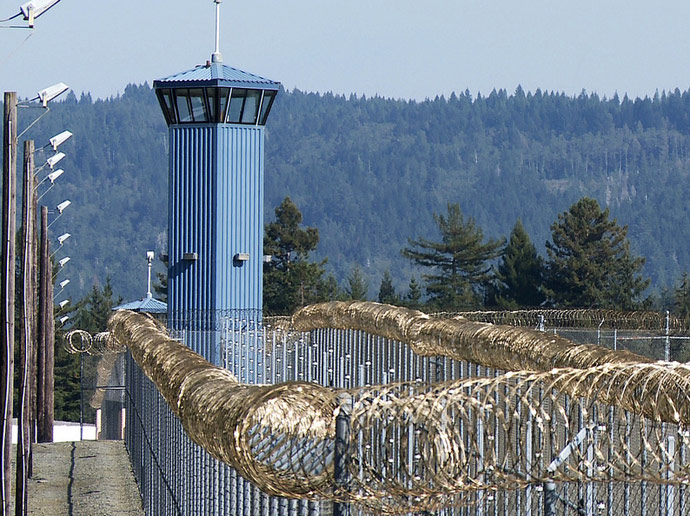30,000 California Inmates Go On A Hunger Strike

Image via Flickr/ CIRonline
On Monday, 30,000 California inmates went on a hunger strike, officials say. Corrections spokeswomen Terry Thornton said participants refused both breakfast and lunch, with an additional 2,300 inmates skipping work or class.
The Los Angeles Times reports, “The protest was organized by a small group of inmates held in solitary confinement at Pelican Bay State Prison near the Oregon border. Their complaints focus on policies that put inmates in isolation indefinitely, some for decades, if they are suspected of having ties to prison gangs.”
Inmates are requesting a five-year limitation on isolation and monthly phone calls. According to the LA Times, corrections officials “began releasing inmates from isolation who showed no evidence of gang-related behavior. Nearly half of the 400 prisoners reviewed so far have been returned to the general inmate population.”
Despite the hunger strike, Thornton says that “everything has been running smoothly.”
Although a hunger strike is defined by missing nine meals, 30,000 participants were hard to ignore.
In 2011, a similar attempt did not reach the ultimate goal. Roughly 12,000 participants were involved in the hunger strike, and the California Department of Corrections and Rehabilitation promised reform but failed to fulfill that promise, prompting an even larger hunger strike.
The Prison Hunger Strike Solidarity website posted a letter on its site:
The principal prisoner representatives from the PBSP SHU Short Corridor Collective Human Rights Movement do hereby present public notice that our nonviolent peaceful protest of our subjection to decades of indefinite state-sanctioned torture, via long term solitary confinement will resume today, consisting of a hunger strike/work stoppage of indefinite duration until CDCR signs a legally binding agreement meeting our demands, the heart of which mandates an end to long-term solitary confinement (as well as additional major reforms).
Our decision does not come lightly. For the past (2) years we’ve patiently kept an open dialogue with state officials, attempting to hold them to their promise to implement meaningful reforms, responsive to our demands. For the past seven months we have repeatedly pointed out CDCR’s failure to honor their word—and we have explained in detail the ways in which they’ve acted in bad faith and what they need to do to avoid the resumption of our protest action.”
There are currently about 10,000 solitary confinement units in the California prison system. Gabriel Reyes, who is currently serving a 25-year sentence for burgling an unoccupied swelling, has spent 16 years of his sentence (and counting) in isolation due to suspected gang affiliation. He wrote a letter, which was published by Truth-Out, saying:
Unless you have lived it, you cannot imagine what it feels like to be by yourself, between four cold walls, with little concept of time, no one to confide in, and only a pillow for comfort—for years on end. It is a living tomb. I eat alone and exercise alone in a small, dank, cement enclosure known as the ‘dog-pen.’ I am not allowed telephone calls, nor can my family visit me very often; the prison is hundreds of miles from the nearest city. I have not been allowed physical contact with any of my loved ones since 1995. I have developed severe insomnia, I suffer frequent headaches, and I feel helpless and hopeless. In short, I am being psychologically tortured.”









































